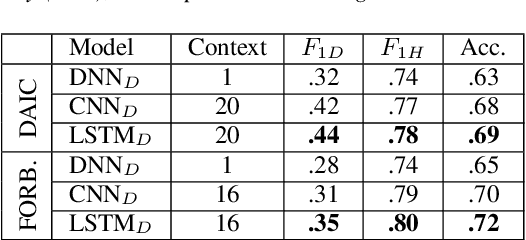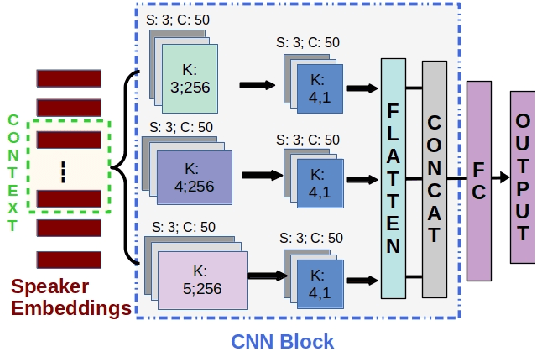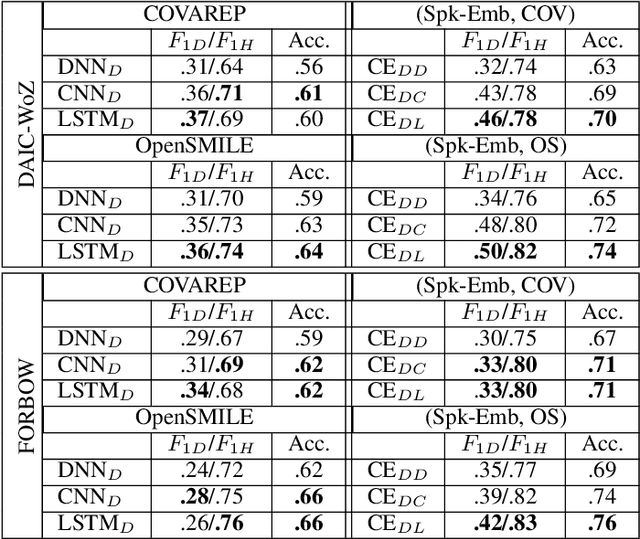Sebastian Rodriguez
Predicting Individual Depression Symptoms from Acoustic Features During Speech
Jun 23, 2024Abstract:Current automatic depression detection systems provide predictions directly without relying on the individual symptoms/items of depression as denoted in the clinical depression rating scales. In contrast, clinicians assess each item in the depression rating scale in a clinical setting, thus implicitly providing a more detailed rationale for a depression diagnosis. In this work, we make a first step towards using the acoustic features of speech to predict individual items of the depression rating scale before obtaining the final depression prediction. For this, we use convolutional (CNN) and recurrent (long short-term memory (LSTM)) neural networks. We consider different approaches to learning the temporal context of speech. Further, we analyze two variants of voting schemes for individual item prediction and depression detection. We also include an animated visualization that shows an example of item prediction over time as the speech progresses.
Rank Reduction Autoencoders -- Enhancing interpolation on nonlinear manifolds
May 22, 2024Abstract:The efficiency of classical Autoencoders (AEs) is limited in many practical situations. When the latent space is reduced through autoencoders, feature extraction becomes possible. However, overfitting is a common issue, leading to ``holes'' in AEs' interpolation capabilities. On the other hand, increasing the latent dimension results in a better approximation with fewer non-linearly coupled features (e.g., Koopman theory or kPCA), but it doesn't necessarily lead to dimensionality reduction, which makes feature extraction problematic. As a result, interpolating using Autoencoders gets harder. In this work, we introduce the Rank Reduction Autoencoder (RRAE), an autoencoder with an enlarged latent space, which is constrained to have a small pre-specified number of dominant singular values (i.e., low-rank). The latent space of RRAEs is large enough to enable accurate predictions while enabling feature extraction. As a result, the proposed autoencoder features a minimal rank linear latent space. To achieve what's proposed, two formulations are presented, a strong and a weak one, that build a reduced basis accurately representing the latent space. The first formulation consists of a truncated SVD in the latent space, while the second one adds a penalty term to the loss function. We show the efficiency of our formulations by using them for interpolation tasks and comparing the results to other autoencoders on both synthetic data and MNIST.
Significance of Speaker Embeddings and Temporal Context for Depression Detection
Jul 24, 2021



Abstract:Depression detection from speech has attracted a lot of attention in recent years. However, the significance of speaker-specific information in depression detection has not yet been explored. In this work, we analyze the significance of speaker embeddings for the task of depression detection from speech. Experimental results show that the speaker embeddings provide important cues to achieve state-of-the-art performance in depression detection. We also show that combining conventional OpenSMILE and COVAREP features, which carry complementary information, with speaker embeddings further improves the depression detection performance. The significance of temporal context in the training of deep learning models for depression detection is also analyzed in this paper.
 Add to Chrome
Add to Chrome Add to Firefox
Add to Firefox Add to Edge
Add to Edge